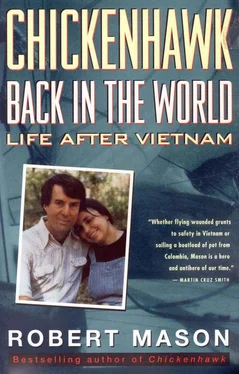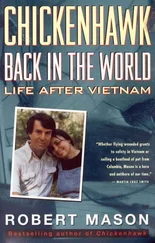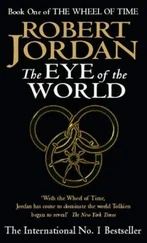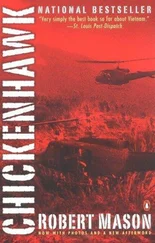Robert Mason - Chickenhawk - Back in the World - Life After Vietnam
Здесь есть возможность читать онлайн «Robert Mason - Chickenhawk - Back in the World - Life After Vietnam» весь текст электронной книги совершенно бесплатно (целиком полную версию без сокращений). В некоторых случаях можно слушать аудио, скачать через торрент в формате fb2 и присутствует краткое содержание. Год выпуска: 2013, Издательство: BookBaby, Жанр: Старинная литература, на английском языке. Описание произведения, (предисловие) а так же отзывы посетителей доступны на портале библиотеки ЛибКат.
- Название:Chickenhawk: Back in the World - Life After Vietnam
- Автор:
- Издательство:BookBaby
- Жанр:
- Год:2013
- ISBN:нет данных
- Рейтинг книги:3 / 5. Голосов: 1
-
Избранное:Добавить в избранное
- Отзывы:
-
Ваша оценка:
- 60
- 1
- 2
- 3
- 4
- 5
Chickenhawk: Back in the World - Life After Vietnam: краткое содержание, описание и аннотация
Предлагаем к чтению аннотацию, описание, краткое содержание или предисловие (зависит от того, что написал сам автор книги «Chickenhawk: Back in the World - Life After Vietnam»). Если вы не нашли необходимую информацию о книге — напишите в комментариях, мы постараемся отыскать её.
Chickenhawk: Back in the World - Life After Vietnam — читать онлайн бесплатно полную книгу (весь текст) целиком
Ниже представлен текст книги, разбитый по страницам. Система сохранения места последней прочитанной страницы, позволяет с удобством читать онлайн бесплатно книгу «Chickenhawk: Back in the World - Life After Vietnam», без необходимости каждый раз заново искать на чём Вы остановились. Поставьте закладку, и сможете в любой момент перейти на страницу, на которой закончили чтение.
Интервал:
Закладка:
I nodded, smiling. I felt good. The ocean was beautiful. Steel-blue waves moved past us, looking solid as granite. If it were a movie, and you froze a frame, you’d think you were on a glassy, volcanic, primeval plain that went to infinity. The horizon encircled us; we really were in the center of the universe. The Namaste leaned into her trek and, as tubby as she was, cut a fine swath through the sea. She was alive. Creaking wood sounds came from below deck. Wind sang through the stays and shrouds. She paused as the bow pierced the waves, raised herself, and pushed ahead against a cobalt mound, the top of which boiled across her bow. After cresting the wave she rushed down the other side and you could feel the joy of success in the relief of the rigging and the surge of acceleration.
I studied the sails that were capturing the power. They were full, perfect arcs, taut as drumheads and trimmed to perfection—not one wrinkle or tremor. People have spent centuries making up names for the parts of sails. There’s the head at the top, the leech at the trailing edge, the clew at the end of the boom, the foot on the boom, the tack at the mast. They call the interior of the sail the luff. To make the whole thing stiffer and less inclined to flap around, they invented yardstick-sized sticks, called battens, and stuffed them into batten pockets they sewed in the leech. I never knew a piece of cloth could be so complicated. These are airfoils, I thought, wings. They just have a lot more names than airplane wings. The Namaste is flying just like a plane, except it’s flying on its edge.
I’m a pilot. Understanding how wings work is part of my nature. I used to wonder where I’d gotten the desire, the obsession, to fly. The first dreams I can recall were about flying. I was born in 1942; not very likely I’d been an airplane pilot in a previous life. I don’t believe in reincarnation, but if I did, I’d have to think I might’ve been a sailor, or a bird.
Ireland came up from below, where he’d been napping. He had a cup of steaming coffee in his hand. He watched John swinging the sextant and looked at me. “Buenas mornings, Ali. We know where the fucky we are?”
“Not yet,” I said. “We’re—”
“Ready?” John said.
“Ready.” I checked the watch.
“Mark.”
“Eleven forty-six and thirty-one seconds,” I said.
“Now we know, si?” Ireland grinned.
“Yes,” I said. “Now we know.”
“Where?”
I pointed to the sun and said, “We are north of the sun, in the Atlantic Ocean.”
“So.” Ireland grinned and nodded. “Elephant navigator.”
John came up under the dodger with us. He put the pad down on the ledge next to the hatch. “We’ve got two shots. You can fix your position with two, but it’s better to have three. Four, even. Least one of them is going to be fucked up. Trying to put the sun on the horizon from a pitching deck ain’t easy. Wanna try?” He held the sextant out to me.
I went back beside the tiller with the sextant. I’d done this the day before, so I knew the principle. John was right; it’s hard to do. The sextant has a small telescopic sight which you look through. On top of the sextant is a small mirror, an index mirror, that reflects the image of the sun onto another mirror, a horizon mirror, and finally into one half of the split image you see when you look through the telescope. The idea is to sight the horizon through the telescope and then adjust the sextant until you see the sun in one side of the split image. When the sun’s image is close to the horizon, you adjust the mircrometer knob until the image of the the sun’s disk just kisses the horizon. The trouble is the pitching deck makes it nearly impossible to hold the sight steady. I got the sun close to the horizon and then swung the sextant vertically in a small arc, making the image of the sun swing back and forth over the sea. The bottom of the arc of the swing is straight down, something that’s otherwise impossible to know on a moving boat. I called, “Ready?”
John said, “Ready.”
I swung the sextant and twisted the micrometer knob. I nudged the sun until it just kissed the horizon. Got it. “Mark.”
“Twelve oh one, seventeen seconds,” John said. I went back under the dodger as he wrote it down. “What’d you get?”
I read the scale. “Seventy-five degrees, thirty minutes, six seconds, give or take a few seconds.” John nodded and wrote that down next to the time.
“All right. Now we can calculate.” He got the Air Almanac from the clutter—books, cigarettes, my camera, a jar of Skippy’s, and a box of Ritz crackers—we kept behind the windshield and paged to the date. There’s also the Nautical Almanac, but John liked this one; they’re essentially the same. The Air Almanac is a book of tables, updated annually, that show where the sun is for any time of day, relative to Greenwich, England. You have to convert your local time to Greenwich Mean Time and then calculate at what latitude you would have to be to see the sun at the elevation you measured at the time you measured it. It takes a good five minutes to do this by hand, and any small arithmetic errors can put you off by hundreds of miles. I figured I could program my calculator to do most of the math, when I understood how to do it on paper.
When you’ve got the numbers, you draw an arc with a compass on a universal charting sheet, centered from the guessed position you marked on the sheet. I’m leaving out some nitpicking details, but essentially, where the arcs cross is your location—plus or minus a mile or so. John went below and drew the arcs. He came back up with the charting sheet. The arcs all crossed, but not at one point. The intersections made a triangle big enough for a dime. The space was the margin of error, about two miles, and ours was about as good as it gets on a small boat in a rough sea. “Here,” John said, pointing proudly at the chart. “We’re here. In this little fucking triangle!” We marked the spot on our map—about two hundred miles off the coast of Florida.
“Ali was right!” Ireland said. “We’re north of the sun, in the Atlantic ocean! What instincts, Ali.”
I grinned. “Guess I’m a natural navigator.”
By late that afternoon, the sea was calming. The winds were still pretty strong and the Namaste cruised smartly through the smooth sea at about five or six knots, fast for her. Knots, as I’d discovered reading the sailing books John had brought, meant exactly that. A hundred years before, sailors used to tie regularly spaced knots in a string, put a float on the end of it, and toss the float overboard. As the string played out, the sailors counted the knots that slipped through their fingers for one minute, and that would be how many knots they were going. Knots means nautical miles per hour, and we got it by timing ourselves between one position fix and the next. I wanted to try the counting-knots-on-a-string method, though.
Bob had cooked some chicken and rice on the alcohol stove. We had no designated cook. We took turns at irregular intervals, whenever the mood struck us. I cooked often—something Patience would have been amazed to know—because I enjoyed the challenge of making a meal against the adversity of the rolling and pitching boat. In a real storm it could take hours making a meal, but sailing provides lots of hours.
We sat in the cockpit at sunset and watched the sun sink into the sea. The red glow shimmered, a million flecks of red from a million moving facets on the sea. We checked the time when the top of the sun’s disk intersected the horizon, a free sighting we could use. As we ate, sunset became dusk. Night fell. The stars, following Venus’s lead, seemed to pop out of the sky. Before we finished eating, a brilliant dome of stars hovered over us. I stood up and looked around. The faint line of the horizon was a circle around us, the edge of a disk, the edge of the world floating in space. I sat down.
Читать дальшеИнтервал:
Закладка:
Похожие книги на «Chickenhawk: Back in the World - Life After Vietnam»
Представляем Вашему вниманию похожие книги на «Chickenhawk: Back in the World - Life After Vietnam» списком для выбора. Мы отобрали схожую по названию и смыслу литературу в надежде предоставить читателям больше вариантов отыскать новые, интересные, ещё непрочитанные произведения.
Обсуждение, отзывы о книге «Chickenhawk: Back in the World - Life After Vietnam» и просто собственные мнения читателей. Оставьте ваши комментарии, напишите, что Вы думаете о произведении, его смысле или главных героях. Укажите что конкретно понравилось, а что нет, и почему Вы так считаете.












